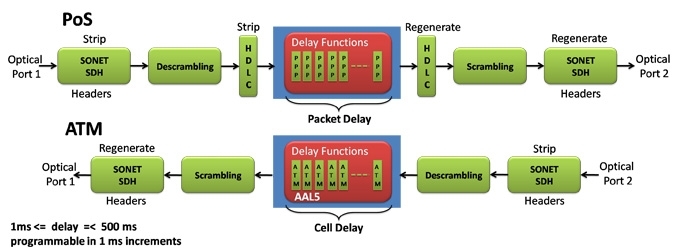- Related articles
- Used in 10GBASE-LRM Standard optical transceiver models
- Optical Transceivers for Cisco SG500XG-8F8T-K9-G5 Switch
- What is a server adapter?
- Optical Transceivers for Cisco N9K-X9464PX= Switch
- Optical Transceivers for Cisco WS-C3650-48FD-L Switch
- Optical Transceivers for Cisco WS-C2960S-48TS-L Switch
- Optical Transceivers for Cisco N9K-C9372PX-E Switch
- All Cisco SFP-OC3-LR1's information (List price, Specs, Datasheet PDF, Compatibility matri
- What is a transceiver module?
- Optical Transceivers for Cisco WS-C3650-48PS-L Switch

Definition:
Packet over SONET/SDH, abbreviated POS, is a communications protocol for transmitting packets in the form of the Point to Point Protocol (PPP) over SDH or SONET, which are both standard protocols for communicating digital information using lasers or light emitting diodes (LEDs) over optical fibre at high line rates. POS is defined by RFC 2615 as PPP over SONET/SDH. PPP is the Point to Point Protocol that was designed as a standard method of communicating over point-to-point links. Since SONET/SDH utilises point-to-point circuits, PPP is well suited for use over these links. Scrambling is performed during insertion of the PPP packets into the SONET/SDH frame to solve various security attacks including denial-of-service attacks and the imitation of SONET/SDH alarms. This modification was justified as cost-effective because the scrambling algorithm was already used by the standard used to transport ATM cells over SONET/SDH.
Packet over Sonet vs ATM
In ATM environments, the key difference between SONET and SDH framing modes is the type of cell transmission when no user or data cells are available. The ATM forum specifies the use of idle cells if unassigned cells are not generated. More specifically, in Synchronous Transport Module-X (STM-X) mode, an ATM interface sends idle cells for cell-rate decoupling. In Synchronous Transport Signal-Xc (STS-Xc) mode, the ATM interface sends unassigned cells for cell-rate decoupling.
Due to SONET/SDH's essential protocol neutrality and transport-oriented features, SONET/SDH was the obvious choice for transporting the fixed length Asynchronous Transfer Mode (ATM) frames also known as cells. It quickly evolved mapping structures and concatenated payload containers to transport ATM connections. In other words, for ATM (and eventually other protocols such as Ethernet), the internal complex structure previously used to transport circuit-oriented connections was removed and replaced with a large and concatenated frame (such as STS-3c) into which ATM cells, IP packets, or Ethernet frames are placed.
Packet over Sonet Frame Format:
The current Internet Engineering Task Force (IETF) PoS specification is RFC 2615 (PPP over SONET), which obsoletes RFC 1619. The PoS RFCs define the requirements that are needed to transport data packets through PoS across a SONET network. These requirements are summarized as follows:
- High-order containment
- Octet alignment
- Payload scrambling
The most important application of POS is to support sending of IP packets across Wide Area Networks. Large amounts of traffic on the Internet are carried over POS links. POS (packet over SONET) is a double-nested abbreviation. The S represents "SONET/SDH", which itself stands for "Synchronous Optical Network/Synchronous Digital Hierarchy". Given this information, POS technically stands for "Packet over Synchronous Optical Network/Synchronous Digital Hierarchy".
Please click to check more related concepts:
| Ethernet standard | Protocol |
| 1000BASE- T | |
| 1000BASE | |
| 1000BASE-SX | |
| 1000BASE-X | |
| 10GBASE-SR | |
| 100BASE-FX |






















































